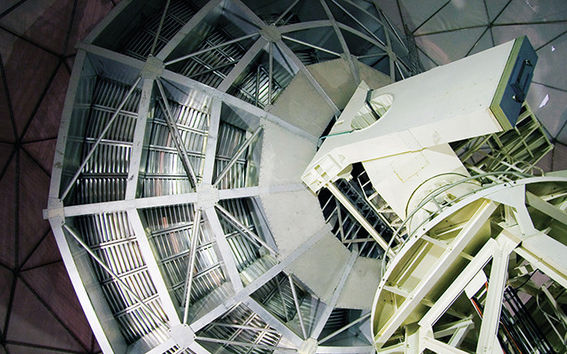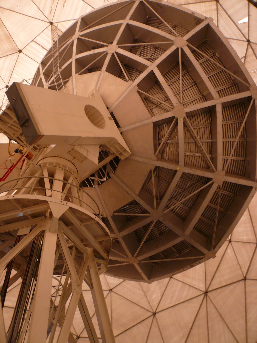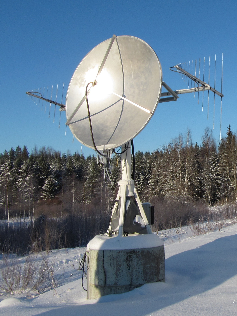Metsähovi's main instruments

The main 14-metre radio telescope
The largest instrument in Metsähovi is the 13.7-metre radio telescope.The telescope is a crucial tool in many projects, such as solar studies, extragalactic radio source observations and international interferometric observations. The telescope is located inside a protective radome that shields the telescope from wind, rain, snow and solar heating.

5.5-metre radio telescopes (MCA-1)
Metsähovi is equipping a new 5.5-metre radio telescope for radio astronomical observations. The telescope, MCA-1, is the first of the four identical antennas that were donated to Mestähovi after they were decommissioned from their original use in satellite telecommunications. They are now being turned into radio telescopes, with the aim of connecting them into a radio interferometer consisting of 3-4 of these 5.5-metre dishes: the Metsähovi Compact Array (MCA).
Solar monitoring instruments
Sun antenna (SunAnt)
The 1.8-metre solar telescope SunAnt is used for continuous monitoring of the Sun's radio emission. It is located outside with no radome and it tracks the Sun from sunrise to sunset. The radio telescope also contains two additional radio antennas that capture low-frequency signals of solar flares as part of the international e-Callisto monitoring network.

Metsähovi Solar Low-frequency Antenna (METSOLA)
The newest addition to Metsähovi's receivers is the pyramid-shaped cross-dipole antenna. Even though it does not turn or point towards the Sun, it is able to detect solar activity at low radio frequencies.
Very Long Baseline Interferometry
In addition to the telescopes working alone, the 14-metre radio telescope also participates in international observing campaigns where radio observatories around the world (or even in space!) are "connected" electronically, making a planet-size virtual radio telescope. These observations, depending on technology called Very Long Baseline Interferometry (VLBI), offer the best possible resolution available with any telescope.
Astronomical receivers for the radio telescopes
Receivers are to radio telescopes what cameras are to optical telescopes: they collect the radiation and information gathered by large dish of the radio telescope or other antenna. Most of the antennas and telescopes only have one receiver, but for the 14-metre radio telescope there are several different receivers that allow observations at specific radio frequencies.
Maintaining, upgrading and improving the receivers and technology related to them is a crucial for keeping the research ongoing, and studying and working with receiver technology is a important part of the engineers work. Also many students works (see M.Sc. theses completed in Metsähovi) involve designing or testing the receivers for the radio telescopes. For technical information about Metsähovi's receivers.
Radio frequency interference
Radio astronomical observations are ruined by radio frequency interference (RFI) from e.g. wireless networks and mobile phones. In order to minimise the "radio noise" and guard the observations against human-made signals, Metsähovi maintains radio silence around the observatory and also monitors the radio frequencies for any disturbances. Engineers at Metsähovi work to improve the monitoring as well as actively protect the equipment and observations from interference. This often requires very advanced technology and data-analysis, and improving the RFI protection methods is a an active field of research for the Metsähovi engineers as well as for students specialising in radio technology or data processing.
Metsähovi Radio Observatory
- Published:
- Updated: